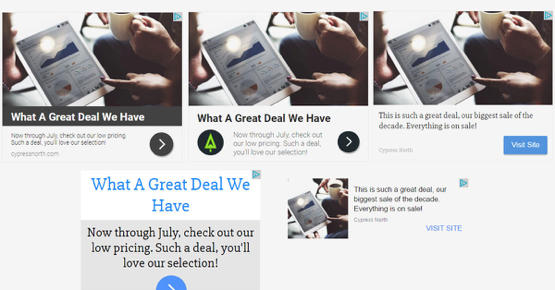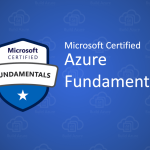Your Guide to Building a Google Display Network Strategy
Welcome to the Google Display Network (GDN). This includes more than two million websites and has the capacity to reach over 90 percent of Internet users.
Ads presented on sites included in the network appear as banners, and the average user will encounter them time and time again. The key point to bear in mind is the passive nature of GDN ads: they are presented to prospects as they browse the web, rather than when they actually go in search of your products or services.
The intent of the user is different. You’re trying to capture their attention and drive them to your site while they’re in the process of looking for something else. As a result, your GDN ads need to offer potential customers enough value to tempt them into clicking through.
Sounds complex? As with many aspects of digital marketing, trying to reach a new audience through Google Display Network advertising can take a little getting used to. However, to make things easier for you, we’ve provided some expert insights below. Let’s take a look.
Contextual keywords
Keywords for GDN ads don’t work in quite the same way as with standard search. Users may not actively be looking to buy the kind of products or services you supply (yet, at least), and the keywords are targeted contextually according to a website’s specific content.
The thinking behind this is if a user is browsing a site featuring the same target keywords as you, the prospects will have a stronger interest in your ads. If they’re reading an article about microfiber towels, for example, an ad for a brand selling these products would be well placed alongside the content.
The power of topical advertising
Another option available for advertising on the Google Display Network is topics. This lets you target your audience based on specific themes and subtopics, but it’s a fairly broad way of reaching your ideal users. You might find you appear on plenty of websites and your ad expenditure grows more than you’d like.
One way around this is to add negative keywords, just as you would when running standard ads. This is a great way to narrow the scope and hone your aim a little.
You can put placement exclusions into effect too, once you’ve identified those websites that give you no ROI. This can be pretty time-consuming, but it’s worthwhile to stop yourself paying for ad space that isn’t hitting the mark as it should.
Targeting audience interests and behaviour
Aiming your ads at audiences based on their interests and behaviour may sound a tad odd at first, but it’s actually a powerful part of advertising on the Google Display Network.
One option you have is In-market Audiences. This applies to users who have displayed intent to purchase in specific areas, and focuses on reaching those people who may be close to the buying stage. With the right ad in place (a special offer, a discount), you can encourage these prospects to complete a transaction.
Custom Intent Audiences, on the other hand, revolve around building your own bespoke audiences according to certain thematic URLs and keywords that relate to your target buyers. If you want to take a quicker route, you can have Google’s own data indicate the right audience for you.
Similar Audiences involves taking data from remarketing lists and identifying similar behaviour between users. You can target similar types of prospects who tend to match keywords, letting you place your ads in front of people who are more likely to convert than others.
Different ad formats are available
Google Display Network ads are available in various styles. Text display ads are just one, while video ads can be placed on the GDN too. Producing videos takes more time, effort and money than text, but it’s known to be more engaging and convenient for users.
Responsive ads are a fantastic option too. These are based on information you provide (some copy and a logo), and Google will then adjust your ads to suit different formats, including text- and image-based ones. It’s a less hands-on approach that can take some of the strain for you.
Try experimenting with different types, perhaps using A/B testing. Create two ads in different formats and see which drives more traffic / conversions. You then know which is the most effective and worth your money.
Understanding the GDN’s machine learning
Google has invested heavily in machine learning, and integrated it into the Google Display Network to great effect.
This obviously plays a role in certain aspects of GDN advertising, such as targeting similar audiences (as Google recognises similarities in different user-groups to identify worthwhile placements). Responsive ads involve automation and machine learning too, creating effective ads according to the details you supply.
Smart display campaigns are a terrific example of Google’s commitment to advancing machine learning for powerful advertising opportunities. These blend the responsive ads with elements of Similar Audiences technology to optimize marketing campaigns according to what works best.
These incorporate various factors (remarketing topics, similar audiences, in-market audiences etc.) to essentially create bespoke marketing campaigns for your brand. This can take the place of manual A/B testing and save valuable time when trying to reach new audiences.
Of course, the more control you put in the hands of Google’s automation, the less you have for yourself. Many businesses might not see this as an issue, preferring to let super-smart software do the heavy lifting instead. Others, though, will miss the direct input that more traditional options offer.
However, machine learning and automation help to make marketing more effective for smaller companies that lack the in-house resources to build powerful ad campaigns themselves. You can give Google the pertinent data and let them get to work developing the right ads and placements to reach your target audience.
It’s fascinating to see these advances transform the landscape of digital marketing — and makes us wonder where it will continue to go!
That’s it! Your guide to building a Google Display Network strategy. We hope you can take everything you’ve read above and put it into a campaign that boosts your conversions in a big, big way. Let us know what you think below!



















